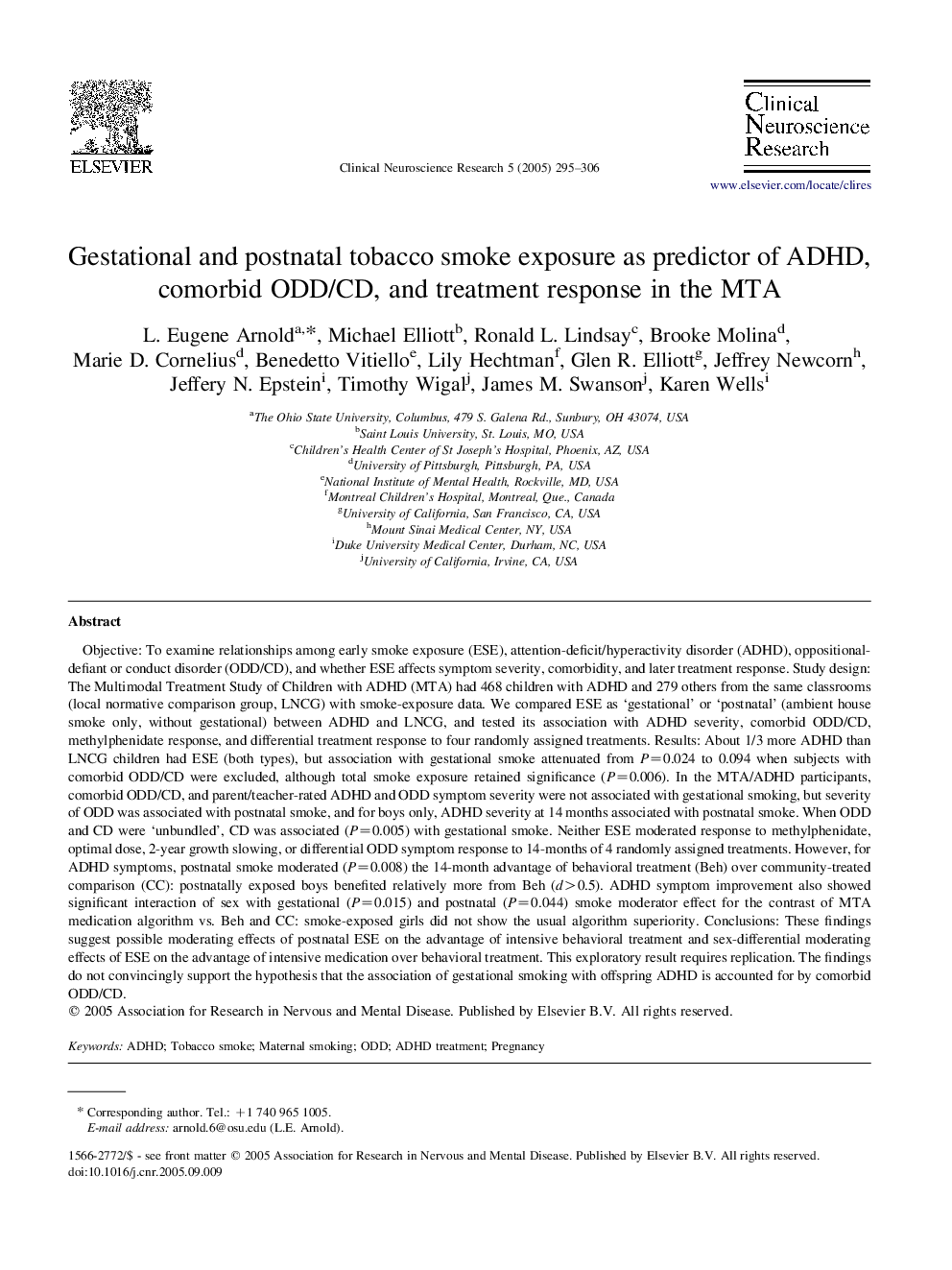| Article ID | Journal | Published Year | Pages | File Type |
|---|---|---|---|---|
| 9189876 | Clinical Neuroscience Research | 2005 | 12 Pages |
Abstract
Objective: To examine relationships among early smoke exposure (ESE), attention-deficit/hyperactivity disorder (ADHD), oppositional-defiant or conduct disorder (ODD/CD), and whether ESE affects symptom severity, comorbidity, and later treatment response. Study design: The Multimodal Treatment Study of Children with ADHD (MTA) had 468 children with ADHD and 279 others from the same classrooms (local normative comparison group, LNCG) with smoke-exposure data. We compared ESE as 'gestational' or 'postnatal' (ambient house smoke only, without gestational) between ADHD and LNCG, and tested its association with ADHD severity, comorbid ODD/CD, methylphenidate response, and differential treatment response to four randomly assigned treatments. Results: About 1/3 more ADHD than LNCG children had ESE (both types), but association with gestational smoke attenuated from P=0.024 to 0.094 when subjects with comorbid ODD/CD were excluded, although total smoke exposure retained significance (P=0.006). In the MTA/ADHD participants, comorbid ODD/CD, and parent/teacher-rated ADHD and ODD symptom severity were not associated with gestational smoking, but severity of ODD was associated with postnatal smoke, and for boys only, ADHD severity at 14 months associated with postnatal smoke. When ODD and CD were 'unbundled', CD was associated (P=0.005) with gestational smoke. Neither ESE moderated response to methylphenidate, optimal dose, 2-year growth slowing, or differential ODD symptom response to 14-months of 4 randomly assigned treatments. However, for ADHD symptoms, postnatal smoke moderated (P=0.008) the 14-month advantage of behavioral treatment (Beh) over community-treated comparison (CC): postnatally exposed boys benefited relatively more from Beh (d>0.5). ADHD symptom improvement also showed significant interaction of sex with gestational (P=0.015) and postnatal (P=0.044) smoke moderator effect for the contrast of MTA medication algorithm vs. Beh and CC: smoke-exposed girls did not show the usual algorithm superiority. Conclusions: These findings suggest possible moderating effects of postnatal ESE on the advantage of intensive behavioral treatment and sex-differential moderating effects of ESE on the advantage of intensive medication over behavioral treatment. This exploratory result requires replication. The findings do not convincingly support the hypothesis that the association of gestational smoking with offspring ADHD is accounted for by comorbid ODD/CD.
Related Topics
Health Sciences
Medicine and Dentistry
Clinical Neurology
Authors
L. Eugene Arnold, Michael Elliott, Ronald L. Lindsay, Brooke Molina, Marie D. Cornelius, Benedetto Vitiello, Lily Hechtman, Glen R. Elliott, Jeffrey Newcorn, Jeffery N. Epstein, Timothy Wigal, James M. Swanson, Karen Wells,
